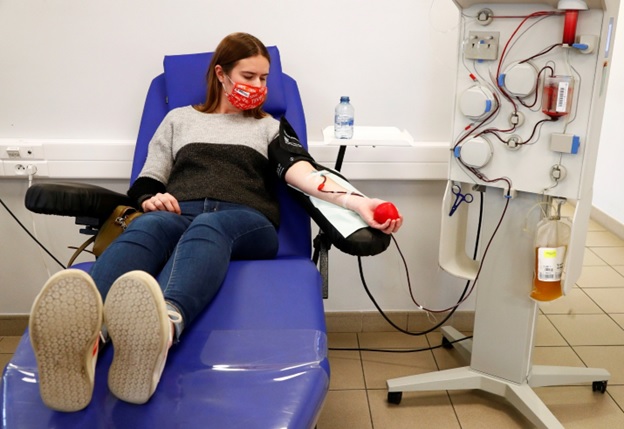
NBC News
Is COVID over?
By Nayyer Ali MD

SARS CoV-2, the virus that causes COVID-19, was first detected in humans in Wuhan, China in December 2019. From that initial outbreak a global pandemic spread, and despite the administration of billions of doses of vaccines, the virus continues to circulate and kill. Meanwhile, most of the world is tired of fighting the virus and has given up on most of the mitigation measures adopted two years ago to reduce the spread of this infecting organism. Where does the future lie? Are we doomed to have substantial death and disease as a permanent feature, or will COVID-19 finally just fade away?
Before we can figure out where we are going, we need to know where we have been. One important piece of data is how many did this virus actually kill? The total number of confirmed COVID deaths around the world is substantially less than the real number because in many poorer countries the healthcare systems simply were unable to diagnose many if not most of the infections. For example, in the massive wave that hit India in April of 2021, most of the dead did not get an official COVID diagnosis. The WHO (World Health Organization) has tried to generate a useful number by counting the “excess deaths” that occurred in each nation in 2020 and 2021. As compared to a typical prior year, it is assumed that any significant increase in total deaths must be due to COVID. According to official data, about six million people have died due to COVID, with the US accounting for the most deaths at 1 million. But using the WHO method, the total is around 15 million people, with India alone suffering 4 million deaths.
COVID-19 is far deadlier to older people, which make up a larger share of the population in developed countries, as compared to the much younger population seen in poorer countries. Death rates should also be adjusted for this variable if a true comparison of how well or poorly nations did in response to COVID is the question. When looked at this way, Eastern Europe, and Russia in particular, was the worst hit region of the world. South Asia and Africa were next, the US and Western Europe performed better, while the best outcomes were in East Asia. Australia and New Zealand were able to keep COVID out entirely till the Omicron wave hit, and China has followed a ruthless strategy of harsh lockdowns to maintain zero COVID.
Back in the late spring of 2021 it looked like we were going to exit COVID entirely as case counts plummeted in response to widely available vaccinations. But then the Delta variant arose in India first and made its way to Europe and the US by July and August. This variant was still controllable with vaccine, but it was much more infective for the unvaccinated, which were still 30-40% of the population in many countries. A large Delta wave resulted that peaked in September in the US and slowly faded in the fall.
It looked again as if we would finally reach the end of COVID, with most people either vaccinated or infected, but COVID threw another variant at the world, this time the Omicron from South Africa. This variant was incredibly infectious, and rapidly spread through Europe and the US with case counts reaching all-time highs. It was sufficiently different from earlier strains of COVID that it could reinfect those who had previous COVID, and it could infect those who had been vaccinated, especially if they had not been boosted. One of the deficiencies of our vaccines is that they don’t induce strong long-term immunity, but instead fade in their protective power over 6 months or more. While vaccines can protect against deadly infection, they can still be evaded enough to cause mild infection.
The first Omicron wave washed rapidly through nations, with data suggesting that 50% of the US population was infected between December 2021 and February 2022. Case counts then collapsed, and again we had reason to hope that the COVID story was finally going to come to an end. But in the last month new sub-variants of Omicron have appeared that have even more immune evasion and are causing a rise in infections in Europe and the US. We are not seeing similar rises in many other countries, for reasons that are unclear.
While case counts are rising, deaths actually continue to fall, not just in the US, but in the entire world. Average daily deaths are now near the lowest levels since the start of the pandemic. This probably reflects the power of at least partial immunity, with pretty much the entire population at this point either infected or vaccinated or both.
The current recommendations are clear. Make sure you are vaccinated and get at least one booster dose of an mRNA vaccine. Get a second booster if it has been six months since the first booster and you are over the age of 50 or have a weakened immune system or serious underlying health conditions. If you do get infected and have symptoms, immediately contact a physician and take a potent oral antiviral, either Paxlovid or Molnupiravir.
The NIH, FDA, and CDC will have to make a decision soon about designing a specific vaccine for use in the fall. Given how much COVID has mutated it would make sense that a new vaccine based on Omicron should be made available. Such a vaccine has been developed by both Pfizer and Moderna, and clinical testing is underway. Whether COVID continues to mutate every year and we will need annual COVID shots just like we need annual flu vaccines remains to be seen. One light on the horizon is the possible development of a pan-Coronavirus vaccine that would work against all SARS-CoV 2 variants and all other coronaviruses that cause human disease (four of the viruses that cause the common cold are coronaviruses).
One wild card in our COVID future is China. Unlike the rest of the world, China did not accept that the virus would slowly spread through its society and a significant number of people would die. Instead, with its massive authoritarian state power, China was able to impose such strict social distancing and masking and other mitigation measures that COVID has been kept to near zero for the last two years after the original outbreak and lockdowns in Wuhan. But Omicron is so infectious that it has challenged China’s ability to keep this up. Shanghai, the main commercial center of China, has endured weeks of harsh lockdown. There appears to be no end in sight to China’s strategy.
China could exit COVID and reopen to international travel, which remains basically banned, if it was willing to use American vaccines and therapeutics. The Chinese vaccines were reasonably good for the original virus but have poor efficacy against the latest Omicron variants. But unfortunately, politics gets in the way. It would be a major embarrassment for the Chinese government to admit to its people that it needs to give them American vaccines. The same goes for the American antiviral drugs, both of which were demonized by Chinese state media as dangerous and ineffective. China also has the option of forcing its elderly to get boosted with its own vaccine, but China inexplicably has not chosen to force this on its citizens, who have mostly gone without getting boosted. The Chinese know that if they lift restrictions and try to go back to normal life, they would be overwhelmed with COVID cases that their healthcare system lacks the capacity to handle. The result will be millions of deaths, and destabilization of the Communist Party grip on China.

